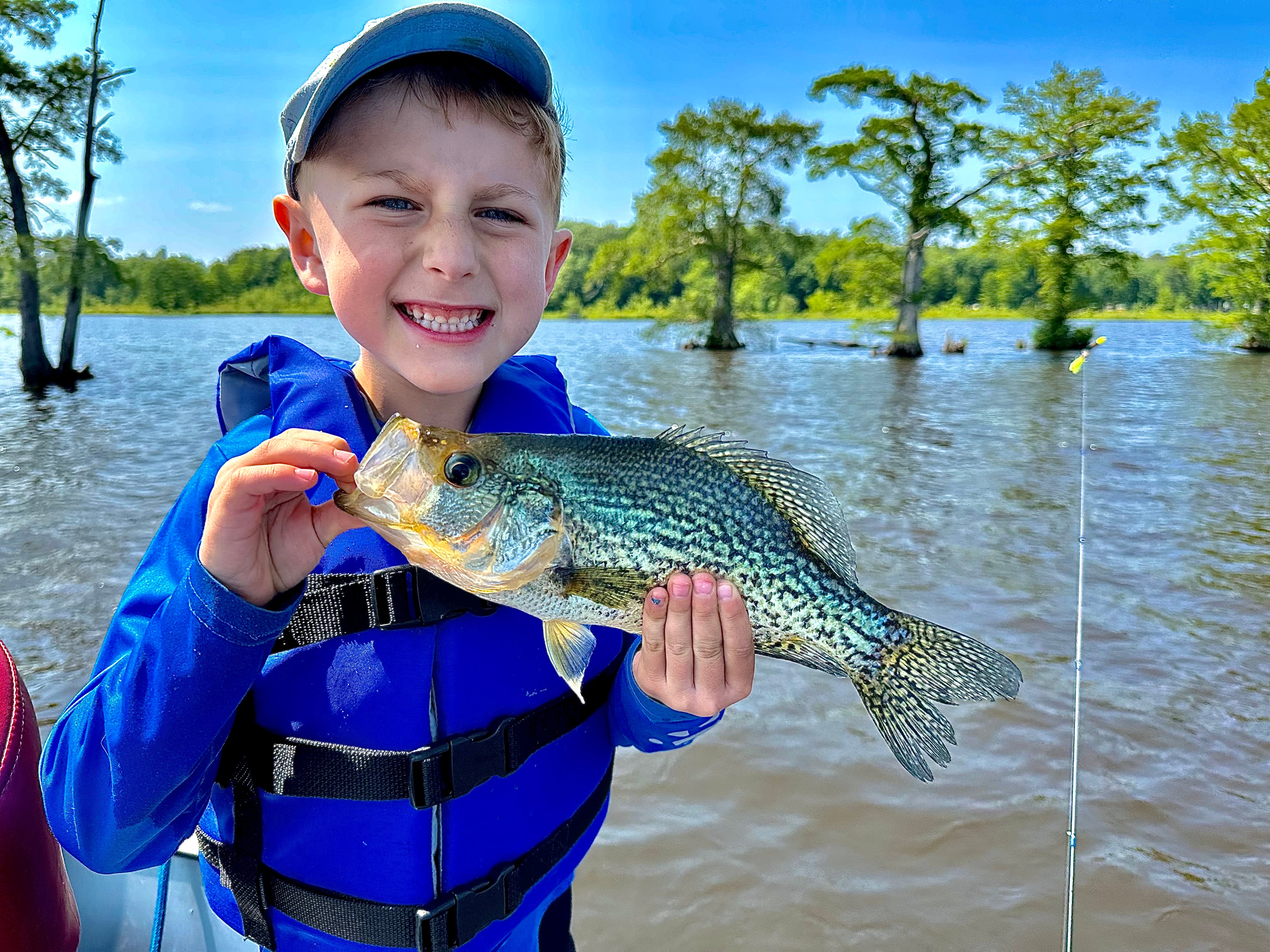Spring These popular game fish are known for their delicious taste and thrilling fights. However, the summer months can present a unique set of challenges when it comes to crappie fishing. In this blog post, we'll uncover the secrets to help you catch crappie during the summer season and maximize your angling success.
-
Understand Their Behavior:
-
Time It Right: Timing is everything when it comes to summer crappie fishing. In general, crappie tend to be most active during low-light conditions, such as early morning or late evening. These periods offer cooler temperatures and lower light intensity, making the fish more inclined to feed. Plan your fishing trips accordingly to maximize your chances of success.
-
Optimal Tackle and Gear: Using the right tackle and gear can significantly improve your chances of hooking a crappie. When targeting crappie during summer, consider using lightweight spinning or spincasting rods between 5 and 7 feet in length. Pair them with a reel loaded with 4- to 8-pound test monofilament line. This setup provides sensitivity and control while allowing you to cast accurately and detect subtle bites.
-
Master the Art of Presentations: During summer, crappie can be finicky and selective about their prey. To entice them, you need to master different presentation techniques. Start by using small jigs, typically 1/16 to 1/8 ounce, in various colors such as chartreuse, white, or pink. Experiment with different retrieve speeds, including slow and steady, jerky, or occasional pauses. Pay attention to how the crappie respond and adjust your technique accordingly.
-
Utilize Live Bait: While jigs are a popular choice, crappie have a soft spot for live bait. Consider using live minnows, which are a favorite of these fish. Rig them on a light wire hook with a split shot weight to keep them suspended at the desired depth. Cast near structures or drop-offs and let the minnow do the rest. Remember to be patient, as crappie sometimes take their time before fully committing to the bite.
-
Stay Mobile and Experiment: Crappie can be scattered during the summer, so it's important to stay mobile and cover different areas. If you're not getting any bites in one spot, don't hesitate to move and explore new locations. Look for signs of crappie activity, such as surface disturbances or schooling baitfish. By being adaptable and willing to try different approaches, you'll increase your chances of finding the honey holes.

